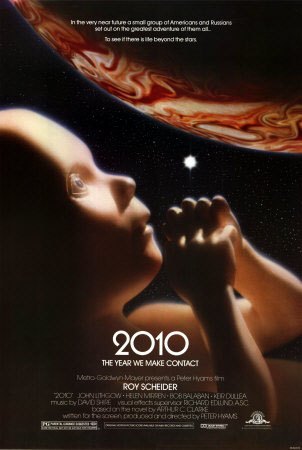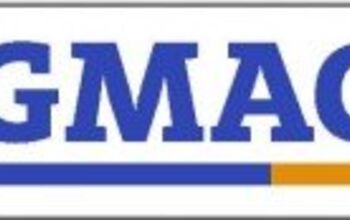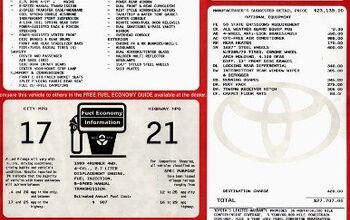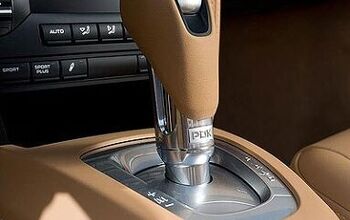TTAC Called It: 2010
We've been saying 2010 is the domestic industry's Holy Grail since 2007. Official confirmation comes at the bottom of a Detroit Free Press article entitled "Detroit 3 ready to focus on future." In fact, the TTAC narrative is all over this thing. "U.S. automakers didn't really adapt after Hurricane Katrina in 2005 sent gas prices above $3 a gallon and consumers started changing their purchasing habits — and it's costing them now. 'That's enough time to change, said Mark Warnsman, an auto analyst for Calyon Securities.'" And now… "All eyes are on 2010." Yes, "If the automakers can make it to the end of the decade, they should at least have a chance to start making money again." If? At least a chance? Seems Detroit's cheerleaders are running out of pep. "By 2010, economists are forecasting recovery in the U.S. housing market and that the economy, hopefully, will be back into growth mode… But after seeing record losses at Detroit's public automakers — $50 billion at GM over the last three years, $15 billion at Ford over the last two — optimism about 2010 is guarded. 'That's a make-or-break year,' economist at the Center for Automotive Research Sean McAlinden said. '2010 is the big question mark.'"
More by Robert Farago


































Comments
Join the conversation
Let's not forget the MAJOR ball dropped by the Detroit 2.8. During the Clinton administration, the Powers That Be decided to go ahead and spend God only knows how much of OUR tax moneys in a show of corporate welfare, by handing money to the Detroit 3 under the "supercar initiative" in order to develop an 80 mpg mid-sized hybrid car - each. Of course the numbskulls in Congress and the White House didn't bother stipulating that if the companies accepted these fat checks (and they did accept the fat checks), that the cars had to actually be put into production! Now, let's "pretend" that the Detroit 3 actually came up with solutions and viable cars which could - say - get only 1/2 of the goal. A 40 mpg mid-sized hybrid car. (The Chrysler car had a gas turbine generator set which never did get connected to the hybrid drivetrain, apparently only running for "sound effects" while the battery would motivate the car short distances while being shown to "the press") But let's play "pretend" and say the Detroit 3 actually didn't simply P!SS the money away (which they did). Let's also assume that the cars needed to be developed within the 8 years of the Clinton administration, then tooled up for production. Let's assume a typically "Detroit" scenario of needing about 3 year to put a car into production. That would have had the cars on the road some time in 2003 for the 2004 model year. The Detroit 3 would have looked pretty darned smart to have competition to the Prius (albiet, some 10 to 20 % less efficient than...), and would have pre-dated the Camry Hybrid, the Altima Hybrid, and the failed Accord Hybrid. In fact, late 2003 for the 2004 model year was the exact time that Prius grew up and became a viable car. Wasn't it? (Answer: yes). Instead, the Detroit 3 pocketed the money, laughed all the way to the bank, heaped derision and scorn on Honda and Toyota for developing hybrid cars while gas was $1 or $2 a gallon, and did not look past their noses into a potential future where oil would become more and more scarce. Interestingly enough, I recall reading in 1974 (34 years ago), that American Motors executives had sat down and looked at long-term trends, which led them to do some highly intelligent moves, such as: -purchase the rights to an Audi overhead camshaft four cylinder engine (which did see use in some 1977, 1978 and 1979 AMC Gremlins and AMC Concords from 1978). -concluded an agreement to distribute Renault cars in the United States (and then encouraged Renault to invest in AMC) -co-developed an economical car line for late 1983 introduction (the AMC Renault Alliance, which did actually win Motor Trend's Car Of The Year for 1984) -co-developed a very viable mid-sized luxury car to sell alongside the very popular Jeep Cherokee, building a "just in time" plant surrounded by supplier plants in Ontario (the car was introduced as the AMC Renault Premier in 1986 for 1987, and almost immediately was rebadged the Eagle Premier) Funny peculiar how AMC executives could see the handwriting on the wall 34 years ago and acted upon it - in comparison to Detroit 3 executives.
Hi, JJ. AMC never went bankrupt, and it didn't even go out of business. It's just that the French displayed their usual amount of spine (AFTER spending tons of money on the new Canadian plant and all-new Premier car line and Cherokee) then pulled out and sold out to Chrysler just before the SUV craze started to make Jeep some serious money. The reason that the AMC Renault (immediately rebadged Eagle) Premier didn't succeed was because Chrysler didn't really want it, didn't spend any marketing money and ignored it; it was the red-headed, left-handed step-child only kept in production due to a contract to purchase advanced all-alloy OHV V6 engines from the PRV (Peugeot-Renault-Volvo) factory in France. All Chrysler wanted was Jeep. And the new Canadian plant (which is the plant in which the RWD Chrysler 300, Dodge Charger and Dodge Challenger are now being built, I might add). So, of course, Chrysler eventually got their way and killed off the Eagle brand. But Jeep still exists, and since AMC purchased Jeep from Kaiser Industries in 1970, in a sense, AMC still exists. In fact, there is a lot of truth in the statement that it was the AMC executives which came along with the deal, that made Chrysler the envy of many car companies in the 1990's, and gave Chrysler a lot of advanced cars (admittedly as well as some real unreliable dogs, like the Neon).
OK, 2010. Is this model year 2010 (i.e., 2009 calendar year) or the actual calendar year 2010? The way things are looking by 2009 we'll be well on our way to bigger economic growth (larger than the small growth we have now).